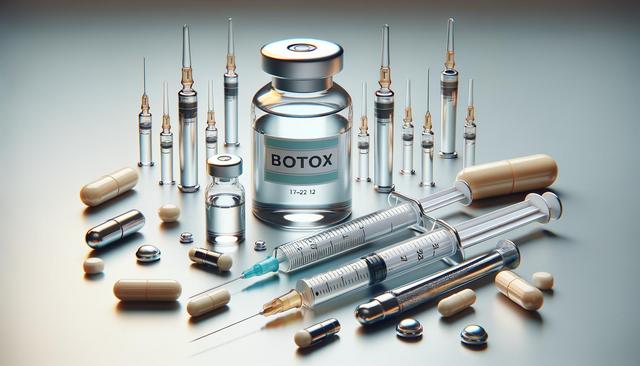What Is Botox and How Does It Work?
Botox is a purified form of botulinum toxin that is used in small, controlled doses to temporarily reduce muscle activity. It works by blocking signals from the nerves to the muscles, preventing the targeted muscle from contracting. This effect helps smooth out wrinkles and fine lines, particularly in areas such as the forehead, crow’s feet around the eyes, and frown lines between the eyebrows.
While primarily known for its aesthetic applications, Botox is also used for medical conditions such as chronic migraines, excessive sweating (hyperhidrosis), overactive bladder, and certain muscular disorders. The treatment is minimally invasive and typically administered via injection by a qualified professional in a clinical setting. The procedure requires little downtime, making it appealing for those seeking convenience.
Common areas treated with Botox for cosmetic reasons include:
- Forehead lines
- Glabellar lines (between the eyebrows)
- Periorbital lines (crow’s feet)
Understanding how Botox works is essential for setting realistic expectations and ensuring safe, effective results.
Common Cosmetic Uses and Benefits
One of the most renowned uses of Botox is for reducing the appearance of facial wrinkles. Many individuals turn to this treatment as a non-surgical solution for maintaining a youthful appearance. The effects typically begin to show within a few days after the injection and can last between three to six months, depending on the individual’s metabolism and the area treated.
Botox is also used preventatively, meaning some individuals choose to begin treatment before deep wrinkles form. This approach may help delay the development of more pronounced lines by limiting the movement of specific facial muscles. Over time, with consistent treatments, some users report a softening of lines even when the effects wear off.
Benefits of cosmetic Botox may include:
- Temporary reduction of visible wrinkles and fine lines
- Non-surgical and quick procedure
- No significant recovery time required
- Potential preventative effects on wrinkle formation
It’s essential to consult with a licensed professional to determine whether Botox is appropriate for your cosmetic goals.
Medical Applications and Effectiveness
Beyond its cosmetic appeal, Botox has gained recognition in the medical community for its therapeutic applications. It is FDA-approved for several medical conditions, and ongoing research continues to explore new uses. One of the most established uses is the treatment of chronic migraines. Patients who suffer from frequent, debilitating headaches may find relief through a series of Botox injections around the head and neck.
Botox is also used to address muscle stiffness or spasticity in conditions such as cerebral palsy or post-stroke complications. By relaxing overactive muscles, it can improve mobility and reduce discomfort. Another notable use is for treating excessive sweating when topical treatments are ineffective. Botox injections in the underarms, hands, or feet can significantly lessen sweating for several months.
Medical benefits may include:
- Relief from chronic migraine symptoms
- Reduction of muscle spasticity
- Improved quality of life for individuals with neurological conditions
- Effective management of hyperhidrosis
Each medical application of Botox should be evaluated by a healthcare provider to ensure suitability and safety.
What to Expect During and After Treatment
The Botox procedure is relatively quick and involves minimal discomfort. Most sessions last between 10 to 30 minutes, depending on the number of areas being treated. A fine needle is used to inject small amounts of Botox into specific muscles. While the injections might cause a slight stinging or pinching sensation, many patients find the process tolerable without the need for anesthesia.
After treatment, it’s common to experience minor redness, swelling, or bruising at the injection sites, which typically resolve within a few days. Patients are often advised to avoid rubbing the treated areas, engaging in strenuous exercise, or lying down flat for several hours following the procedure. These precautions help prevent the Botox from migrating to unintended areas.
Post-treatment tips may include:
- Avoid touching or massaging the treated area for at least 24 hours
- Stay upright for four to six hours after injections
- Refrain from vigorous physical activity on the day of treatment
- Follow up with your provider if any unusual symptoms occur
Results typically become noticeable within three to seven days, with full effects visible after two weeks. It’s important to follow your provider’s recommendations and schedule follow-up appointments as needed to maintain results.
Choosing a Provider and Setting Realistic Expectations
One of the most critical steps in pursuing Botox treatment is choosing a qualified provider. Look for licensed healthcare professionals with experience in administering Botox injections. A thorough consultation should include a discussion of your goals, a review of your medical history, and an explanation of potential risks and benefits.
While Botox can provide noticeable improvements, it’s important to approach the treatment with realistic expectations. Botox does not offer permanent results, and touch-up sessions are required to maintain the desired look or therapeutic effect. Additionally, the extent of improvement varies from person to person based on factors such as age, skin condition, muscle strength, and lifestyle habits.
Key considerations when choosing a provider:
- Credentials and experience in Botox treatment
- Positive patient reviews and testimonials
- Clear communication and transparency about the process
- Availability of follow-up care
Being informed and prepared helps ensure a safe and satisfactory experience with Botox.
Conclusion: Is Botox Right for You?
Botox offers a range of benefits for individuals seeking cosmetic enhancement or relief from certain medical conditions. Whether you’re considering it to smooth out facial lines or manage symptoms like migraines or excessive sweating, it’s essential to approach the treatment thoughtfully. Consulting with a qualified provider, understanding the procedure, and setting realistic expectations are key steps toward making an informed decision. Botox continues to be a well-regarded option for those looking to improve their appearance or quality of life through minimally invasive means.




Leave a Reply